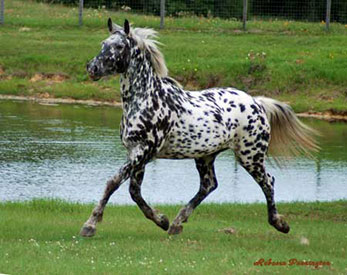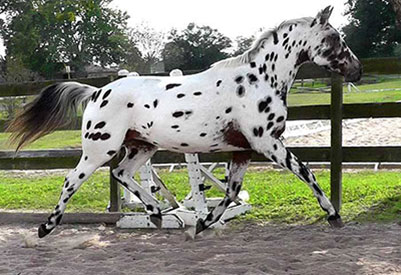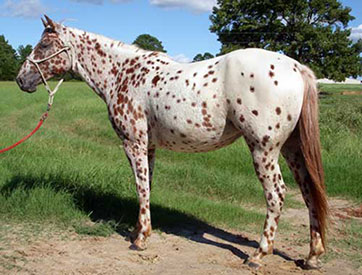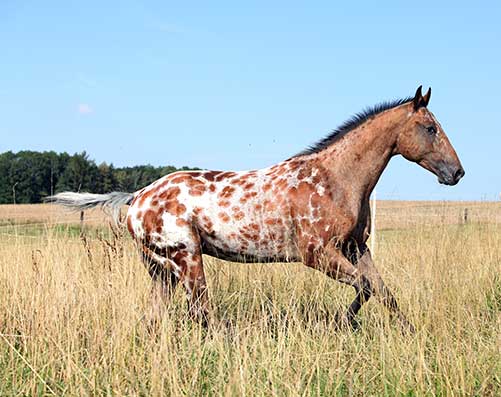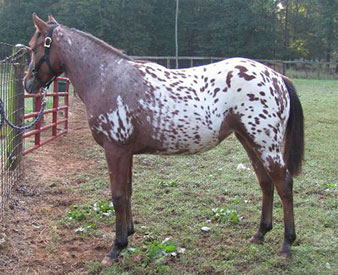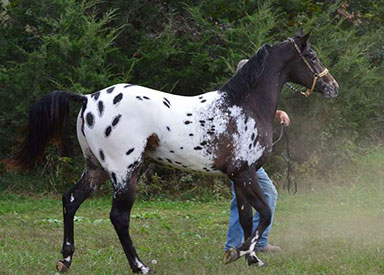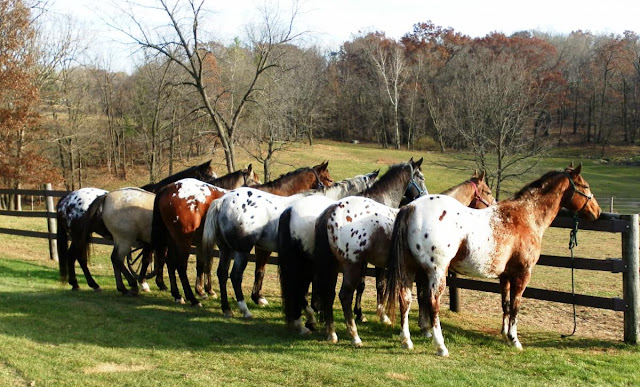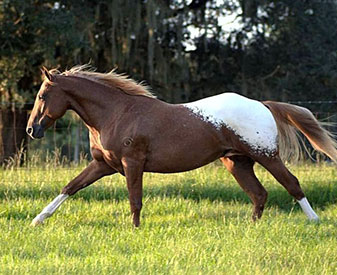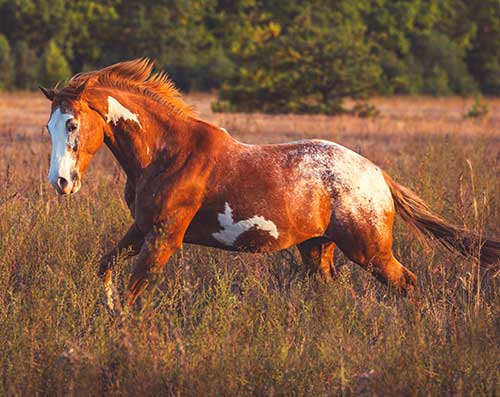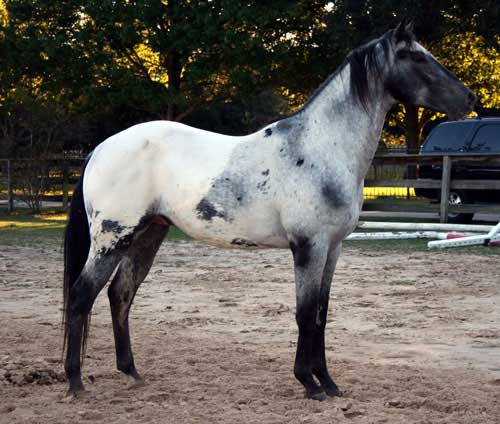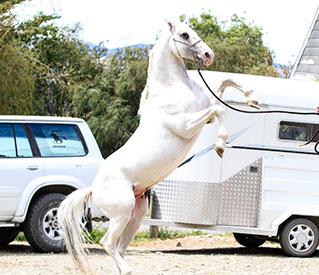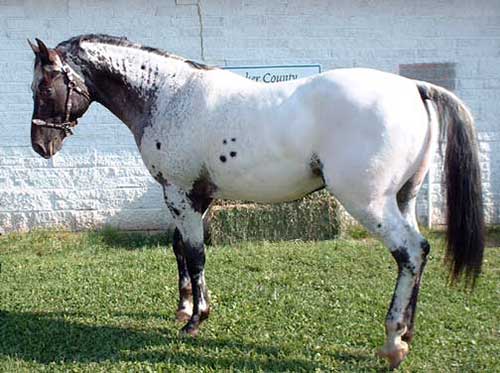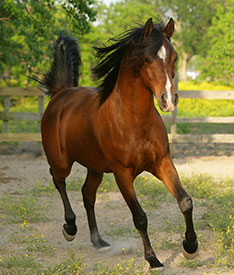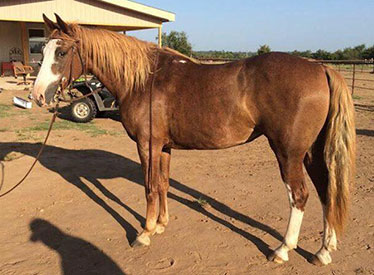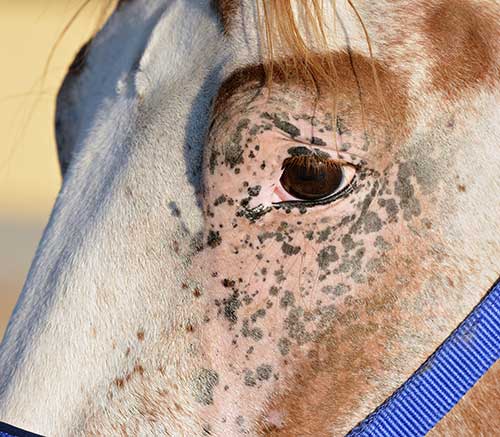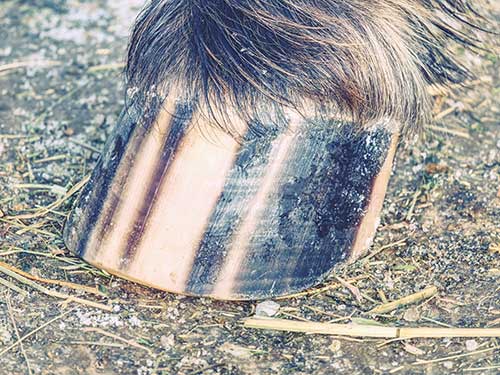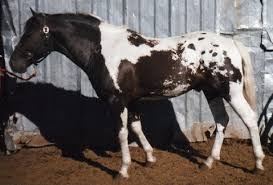Information About Color DesignationColor designation of a horse carrying the genes that create the spotting patterns associated with the Knabstrupper can be challenging to identify and categorize. To assist you in this task, here are some photos with descriptions. As you will see, some horses do not fit neatly into one category, but seem to have characteristics of more than one pattern. Most breeders and horse owners are familiar with the underlying, or base color, of most horses. Here we mean black, bay, chestnut, palomino, cremello, perlino, gray, etc. This will be true of Knabstruppers and Half-Knabstruppers as well, but in addition, a Knabstrupper can have on top of these base colors various and interesting patterns caused by the genes known as LP and PATN. These are the same genes that produce the patterns seen in the Appaloosa horse, a very distant relative of the Knabstrupper. You can learn much more about these genes and how they work by following the excellent genetic research at https://www.appaloosaproject.co/ The main patterns associated with a Knabstrupper (and therefore a Half-Knabstrupper) are: leopard
spotted (all white body with dark spots all over); near
leopard (much like leopard but the white and spotting
doesn't reach past the shoulders); blanket
(dark body with white hindquarters that might or might not
also have dark spots inside the white);
snowflake (dark horse with white lacy pattern on the
hindquarters); frosted
(dark body color that looks as though it is frosted all over
with white, like frost on a car in the winter. This gene
tends to appear sometimes years after birth, causing
breeders to think they have one pattern only to find over
time that the horse completely changes as you will see
below); few
spotted (born almost entirely white with just a few other
spots of color); and solid
(just a base color with none of the above patterns although
they may have more common marking of white like a blaze,
star, and stocking, etc). In addition to the above patterns, a horse with Knabstrupper blood may well have other color characteristics such as: mottling
of the skin around the eyes, nose, mouth and/or genital
regions; stripped
hooves; and/or white
sclera around the iris of the eyes (looking much like a
human eye). Now we
add the complication of having one of the above patterns on
top of the pinto genes (tobiano and overo) As you can see, there is almost an infinite variety of color in this wonderful Half-Knabstrupper world!
|
Copyright 2021 - present. Website designed & maintained by Mane Events Productions.
Contact Webmaster.
